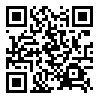Sun, Jul 13, 2025
[Archive]
Volume 4, Issue 2 (5-2022)
IJMCL 2022, 4(2): 9-13 |
Back to browse issues page
Download citation:
BibTeX | RIS | EndNote | Medlars | ProCite | Reference Manager | RefWorks
Send citation to:



BibTeX | RIS | EndNote | Medlars | ProCite | Reference Manager | RefWorks
Send citation to:
Hansen E, Thusholt M, Óskarsson S. (2022). Twenty Seconds of Finger Tapping: A Borderland for Contralateral Transfer of Repeated Bout Rate Enhancement. IJMCL. 4(2), 9-13. doi:10.52547/ijmcl.4.2.9
URL: http://ijmcl.com/article-1-116-en.html
URL: http://ijmcl.com/article-1-116-en.html
Sport Sciences – Performance and Technology, Department of Health Science and Technology, Aalborg University, Denmark , eah@hst.aau.dk
Abstract: (2188 Views)
Highlights:
- Repeated bout rate enhancement is reported for bouts of freely chosen finger tapping.
- The phenomenon has also been reported to be transferred from one hand to the other.
- Previously, 3-min bouts were performed – here, bouts lasted merely 20 s.
- Rate enhancement only occurred when first bout was done with the non-dominant hand.
- 20 s of tapping appears to be a borderland for elicitation of contralateral transfer.
Abstract
Background: To test the hypothesis that a 20-s bout of unilateral index finger tapping, followed by 10 min rest, increases the freely chosen tapping rate performed by the contralateral index finger, in a second 20-s bout.
Methods: Twenty healthy adults performed tapping with the index finger on one hand followed by a 10 min rest period and tapping with the other index finger. Tapping was performed at freely chosen rate. Testing was performed with dominant hand first as well as in the opposite order.
Results: Freely chosen tapping rates from the first bouts were 161.6±94.2 and 162.8±80.3 taps per min for the dominant and non-dominant hand, respectively (p=0.903; R=0.89, p<0.001). When bout one was performed with the non-dominant hand, the rate increased by 15.0%±22.3% in about two (p=0.008). In the opposite order, the rate remained similar (+4.8%±17.9%, but p=0.655).
Conclusion: Based on the present, as well as previously published results, the interpretation is that 20 s of initial index finger tapping appears to constitute a borderland for elicitation of subsequent contralateral excitation of freely chosen tapping rate.
Keywords: Cross-limb Transfer, Interlimb Transfer, Motor Control, Preferred Tapping Frequency, Rhythmicity
Type of Study: Original Article |
Subject:
2. Motor control
Received: 2022/01/11 | Accepted: 2022/04/12
Received: 2022/01/11 | Accepted: 2022/04/12
References
1. Berg, K. E., & Latin, R. W. (2008). Essentials of research methods in health, physical education, exercise science, and recreation (3 ed.). Wolters Kluwer.
2. Bucher, D., Haspel, G., Golowasch, J., & Nadim, F. (2015). Central pattern generators. In: eLS. John Wiley & Sons, Ltd: Chichester. [DOI:10.1002/9780470015902.a0000032.pub2]
3. Carroll, T. J., Lee, M., Hsu, M., & Sayde, J. (2008). Unilateral practice of a ballistic movement causes bilateral increases in performance and corticospinal excitability. J Appl Physiol, 104, 1656-1664. [DOI:10.1152/japplphysiol.01351.2007]
4. Cropper, E. C., Jing, J., Perkins, M. H., & Weiss, K. R. (2017). Use of the Aplysia feeding network to study repetition priming of an episodic behavior. J Neurophysiol, 118, 1861-1870. [DOI:10.1152/jn.00373.2017]
5. Emanuelsen, A., Voigt, M., Madeleine, P., & Hansen, E. A. (2021). Effect of tapping bout duration during freely chosen and passive finger tapping on rate enhancement. J Mot Behav, 53, 351-363. [DOI:10.1080/00222895.2020.1779021]
6. Frigon, A. (2017). The neural control of interlimb coordination during mammalian locomotion. J Neurophysiol, 117, 2224-2241. [DOI:10.1152/jn.00978.2016]
7. Gad, P., Gerasimenko, Y., Zdunowski, S., Turner, A., Sayenko, D., Lu, D. C., & Edgerton, V. R. (2017). Weight Bearing Over-ground Stepping in an Exoskeleton with Non-invasive Spinal Cord Neuromodulation after Motor Complete Paraplegia. Front Neurosci, 11:333. [DOI:10.3389/fnins.2017.00333]
8. Goulding, M. (2009). Circuits controlling vertebrate locomotion: moving in a new direction. Nat Rev Neurosci, 10, 507-518.
https://doi.org/10.1038/nrn2608 [DOI:nrn2608]
9. Hammond, G., & Gunasekera, S. (2008). Production of successive force impulses by the left and right hands. J Mot Behav, 40, 409-416.
https://doi.org/10.3200/JMBR.40.5.409-416 [DOI:63078PQ8T7K42TKW]
10. Hansen, E. A. (2021). Unprompted Alteration of Freely Chosen Movement Rate During Stereotyped Rhythmic Movement: Examples and Review. Motor Control, 25, 385-402. [DOI:10.1123/mc.2020-0049]
11. Hansen, E. A., Bak, S., Knudsen, L., Seiferheld, B. E., Stevenson, A. J. T., & Emanuelsen, A. (2020). Contralateral Transfer of the Phenomenon of Repeated Bout Rate Enhancement in Unilateral Index Finger Tapping. J Mot Behav, 52, 89-96. [DOI:10.1080/00222895.2019.1592101]
12. Hansen, E. A., Ebbesen, B. D., Dalsgaard, A., Mora-Jensen, M. H., & Rasmussen, J. (2015). Freely chosen index finger tapping frequency is increased in repeated bouts of tapping. J Mot Behav, 47, 490-496. DOI: 10.1080/00222895.2015.1015675 [DOI:10.1080/00222895.2015.1015675]
13. Hansen, E. A., & Ohnstad, A. E. (2008). Evidence for freely chosen pedalling rate during submaximal cycling to be a robust innate voluntary motor rhythm. Exp Brain Res, 186, 365-373. DOI 10.1007/s00221-007-1240-5 [DOI:10.1007/s00221-007-1240-5]
14. Hofstoetter, U. S., Knikou, M., Guertin, P. A., & Minassian, K. (2017). Probing the Human Spinal Locomotor Circuits by Phasic Step-Induced Feedback and by Tonic Electrical and Pharmacological Neuromodulation. Curr Pharm Des, 23, 1805-1820. [DOI:10.2174/1381612822666161214144655]
15. Jeka, J. J., Kelso, J. A. S., & Kiemel, T. (1993). Spontaneous transitions and symmetry: Pattern dynamics in human four-limb coordination. Hum Mov Sci, 12, 627-651. [DOI:10.1016/0167-9457(93)90009-E]
16. Kelso, J. A. S., & Schöner, G. (1988). Self-organization of coordinative movement patterns. Hum Mov Sci, 7, 27-46. [DOI:10.1016/0167-9457(88)90003-6]
17. Majczynski, H., Cabaj, A. M., Jordan, L. M., & Slawinska, U. (2020). Contribution of 5-HT2 Receptors to the Control of the Spinal Locomotor System in Intact Rats. Front Neural Circuits, 14:14. [DOI:10.3389/fncir.2020.00014]
18. Mora-Jensen, M. H., Madeleine, P., & Hansen, E. A. (2017). Vertical finger displacement is reduced in index finger tapping during repeated bout rate enhancement. Motor Control, 21, 457-467. doi: 10.1123/mc.2016-0037 [DOI:10.1123/mc.2016-0037]
19. Moussay, S., Dosseville, F., Gauthier, A., Larue, J., Sesboüe, B., & Davenne, D. (2002). Circadian rhythms during cycling exercise and finger-tapping task. Chronobiol Int, 19, 1137-1149. http://www.ncbi.nlm.nih.gov/pubmed/12511031 [DOI:10.1081/CBI-120015966]
20. Nielsen, B. M., Fjordside, C., Jensen, N. B., & Hansen, E. A. (2022). History dependence of freely chosen index finger tapping rhythmicity. IJMCL, 4, 9-18. [DOI:10.52547/ijmcl.4.1.9]
21. Perrier, J. F., & Cotel, F. (2015). Serotonergic modulation of spinal motor control. Curr Opin Neurobiol, 33, 1-7. [DOI:10.1016/j.conb.2014.12.008]
22. Pitcher, T. M., Piek, J. P., & Barrett, N. C. (2002). Timing and force control in boys with attention deficit hyperactivity disorder: subtype differences and the effect of comorbid developmental coordination disorder. Hum Mov Sci, 21, 919-945. https://www.ncbi.nlm.nih.gov/pubmed/12620726 [DOI:10.1016/S0167-9457(02)00167-7]
23. Roche, R., Viswanathan, P., Clark, J. E., & Whitall, J. (2016). Children with developmental coordination disorder (DCD) can adapt to perceptible and subliminal rhythm changes but are more variable. Hum Mov Sci, 50, 19-29. [DOI:10.1016/j.humov.2016.09.003]
24. Sakamoto, M., Tazoe, T., Nakajima, T., Endoh, T., Shiozawa, S., & Komiyama, T. (2007). Voluntary changes in leg cadence modulate arm cadence during simultaneous arm and leg cycling. Exp Brain Res, 176, 188-192. http://www.ncbi.nlm.nih.gov/pubmed/17061091 [DOI:10.1007/s00221-006-0742-x]
25. Sanchez, J. A. D., & Kirk, M. D. (2000). Short-term synaptic enhancement modulates ingestion motor programs of aplysia. J Neurosci, 20, RC85. https://www.ncbi.nlm.nih.gov/pubmed/10875940 [DOI:10.1523/JNEUROSCI.20-14-j0004.2000]
26. Sardroodian, M., Madeleine, P., Mora-Jensen, M. H., & Hansen, E. A. (2016). Characteristics of Finger Tapping Are Not Affected by Heavy Strength Training. J Mot Behav, 48, 256-263. [DOI:10.1080/00222895.2015.1089832]
27. Sardroodian, M., Madeleine, P., Voigt, M., & Hansen, E. A. (2015). Freely chosen stride frequencies during walking and running are not correlated with freely chosen pedalling frequency and are insensitive to strength training. Gait Posture, 42, 60-64. doi: 10.1016/j.gaitpost.2015.04.003 [DOI:10.1016/j.gaitpost.2015.04.003]
28. Siniscalchi, M. J., Cropper, E. C., Jing, J., & Weiss, K. R. (2016). Repetition priming of motor activity mediated by a central pattern generator: the importance of extrinsic vs. intrinsic program initiators. J Neurophysiol, 116, 1821-1830. [DOI:10.1152/jn.00365.2016]
29. Stang, J., Wiig, H., Hermansen, M., & Hansen, E. A. (2016). Voluntary movement frequencies in submaximal one- and two-legged Knee extension exercise and pedaling. Front Hum Neurosci, 10:36. doi: 10.3389/fnhum.2016.00036 [DOI:10.3389/fnhum.2016.00036]
30. Teo, W. P., Rodrigues, J. P., Mastaglia, F. L., & Thickbroom, G. W. (2013). Comparing kinematic changes between a finger-tapping task and unconstrained finger flexion-extension task in patients with Parkinson's disease. Exp Brain Res, 227, 323-331. [DOI:10.1007/s00221-013-3491-7]
31. Wing, A. M., & Kristofferson, A. B. (1973). The timing of interresponse intervals. Percept Psychophys, 13, 455-460. [DOI:10.3758/BF03205802]
32. Zentgraf, K., Lorey, B., Bischoff, M., Zimmermann, K., Stark, R., & Munzert, J. (2009). Neural correlates of attentional focusing during finger movements: A fMRI study. J Mot Behav, 41, 535-541.
https://doi.org/10.3200/35-08-091 [DOI:E320751124N88812]
33. Zhu, Y., Weston, E. B., Mehta, R. K., & Marras, W. S. (2021). Neural and biomechanical tradeoffs associated with human-exoskeleton interactions. Appl Ergon, 96, 103494. [DOI:10.1016/j.apergo.2021.103494]
Send email to the article author
| Rights and Permissions | |
 |
This work is licensed under Attribution 4.0 International (CC BY 4.0). |












